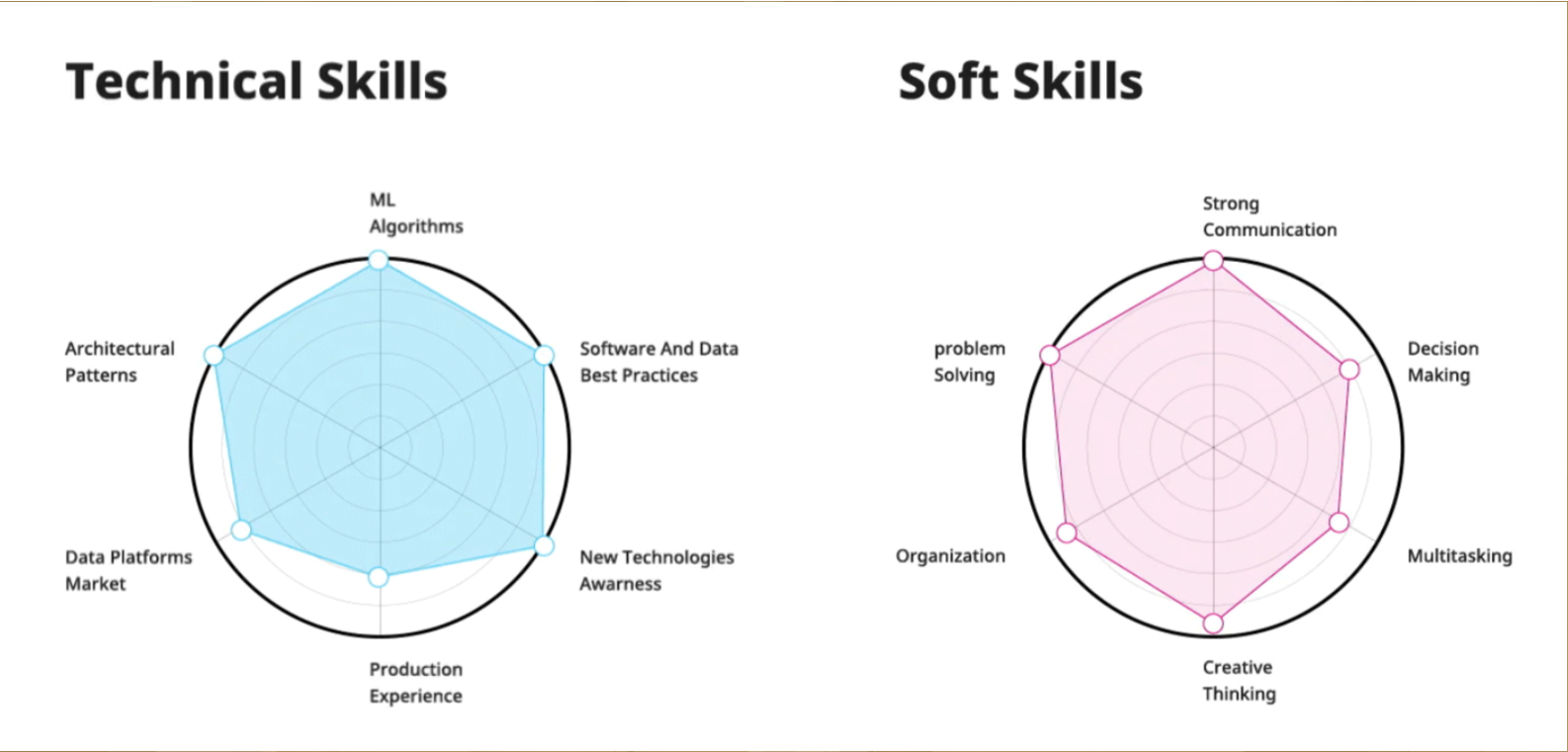
The Skills of a Data Architect

The current market is observing a massive demand for data architecture expertise, underscoring the ever-growing importance of the data architect’s role. Over the past few years, organizations have focused their efforts on constructing data products, especially AI-based models and applications for business usage. However, despite these efforts, many of these projects have failed to reach the production phase. The primary reason for this situation seems to be a lack of understanding and effective communication between IT professionals and data experts within the organizations, this is not the only reason.
The Role of a Data Architect
The role of the data architect has evolved as an essential one, especially for bridging the gap between:
- Data science teams keen on pushing their work to production.
- IT departments dedicated to preserving their processes.
To enable seamless integration of data within the organization, the data architect must work collaboratively with all stakeholders involved in data and software processes. These include Ops, Enterprise/Solution Architects, Application Architects, Security, DPOs, Data Scientists, Data Engineers, Managers, Product Owners, and Business Sponsors.
Besides numerous coffee breaks, the data architect’s role involves:
- Analyzing Current IT Infrastructure: This entails a comprehensive study of the current IT methodologies, including the various systems, software applications, and hardware used, and the relationships between them.
2. Comprehensive Documentation of Data Projects: The data architect’s responsibility (from RACI matrix) involves creating complete records of each data project.
3. Identifying Synergies and Opportunities for Reuse: The data architect should conduct a thorough analysis of existing IT solutions against the requirements of the new data project before development begins.
4. Challenging Existing Architectural Norms: A data architect must not hesitate to challenge the status quo if it does not align with the best architectural practices or meet the project’s needs.
5. Identifying Gaps and Proposing Improvements: The data architect is tasked with identifying deficiencies in the existing data architecture. This could involve detecting security vulnerabilities, scalability issues, or areas of inefficiency.
The Skills of a Data Architect
If you’re a leader contemplating the necessary skills your data architect should possess, or if you’re a data/software professional considering transitioning to a data architect role, this section should provide definitive answers:
1. Strong Communication and Soft Skills:
A data architect should be receptive to feedback without personalizing it and must possess an open mindset for continuous learning. They need to acknowledge the vast domain of unknowns that they are yet to explore.
2. Decision-Making Capability:
They must have the ability to make and defend decisions, even when faced with ambiguous requirements.
3. Experience in Production Environments:
A data architect should have substantial experience in production environments. Only having proof-of-concept experience may not suffice for effective data architecture. This experience could stem from either IT or data realms — ideally, a combination of both.
4. Knowledge of Software Architectural Patterns and their Limitations:
A thorough understanding of various software architectural patterns and their respective constraints is essential.
5. In-depth Understanding of Data-related Concepts:
This includes knowledge of data ingestion, storage, transport, processing, quality, privacy, and governance, among others.
6. Awareness of Data Platform Market and Cloud Solutions:
Good knowledge about the market for data platforms and cloud solutions is key.
7. Familiarity with Machine Learning, NLP, Computer Vision Algorithms:
An understanding of various machine learning, natural language processing, and computer vision algorithms is crucial.
8. Knowledge of Deployment Infrastructures: Familiarity with systems like Kubernetes is essential.
9. Solid Software Development Background: They should understand and be able to explain the main design patterns and their limitations.
10. Effective Presentation Skills: Being a good slide maker is a bonus, as it helps in clearly communicating complex ideas and designs.